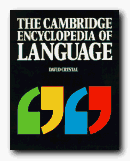free pages from our English Language software program
Articles – definition
![]() Articles go in front of nouns.
Articles go in front of nouns.
![]() There are two types of articles in English:
There are two types of articles in English:
- the definite article [the]
- the indefinite article [a or an].
Examples
The definite article is the — as in the book
The indefinite article is a – as in a pencil
or an — as in an apple
Use
![]() When using the indefinite article a is used before
When using the indefinite article a is used before
![]() an is used when the noun begins with a vowel.
an is used when the noun begins with a vowel.
![]() This convention is based on ease of speaking. It is easier to say an apple than a apple, and a new book than an new book.
This convention is based on ease of speaking. It is easier to say an apple than a apple, and a new book than an new book.
![]() The definite article the remains the same in all cases, although speakers do vary the pronunciation according to whether a vowel or a consonant follows. For example:
The definite article the remains the same in all cases, although speakers do vary the pronunciation according to whether a vowel or a consonant follows. For example:
[thee] – the other – the argument
[theu] – the ball – the tent
![]() NB! Just be thankful the article is gender-free in English. [It’s not in other languages.]
NB! Just be thankful the article is gender-free in English. [It’s not in other languages.]
![]() Articles in English are fairly simple compared with some other European languages. English articles vary only according to ease of speaking, whereas in French they have to agree with the gender of the noun. For example
Articles in English are fairly simple compared with some other European languages. English articles vary only according to ease of speaking, whereas in French they have to agree with the gender of the noun. For example
MASCULINE le bureau
(the office)le matin
(the morning)FEMININE la maison
(the house)la plage
(the beach)
![]() Students of English as a foreign language are relieved to find that the articles stay fairly constant with the exception of the variation between a and an.
Students of English as a foreign language are relieved to find that the articles stay fairly constant with the exception of the variation between a and an.
![]() However, English wasn’t always like this. Old English or Anglo-Saxon had as many variations as Latin or modern German. These have very gradually disappeared as word-order has become more crucial.
However, English wasn’t always like this. Old English or Anglo-Saxon had as many variations as Latin or modern German. These have very gradually disappeared as word-order has become more crucial.
![]() Even today, some people say an historic occasion or an hotel. This is a remnant of Middle English when, because of the French influence, the aitch was not articulated, making the initial syllables of these words effectively vowels. [End of history lesson.]
Even today, some people say an historic occasion or an hotel. This is a remnant of Middle English when, because of the French influence, the aitch was not articulated, making the initial syllables of these words effectively vowels. [End of history lesson.]
Self-assessment quiz follows >>>
© Roy Johnson 2003
English Language 3.0 program
Books on language
More on grammar

